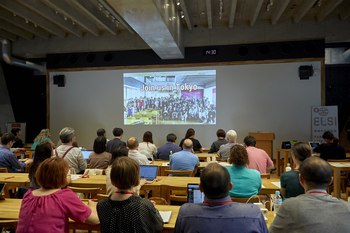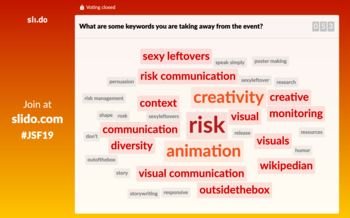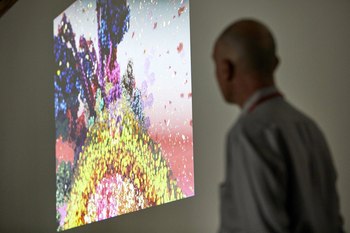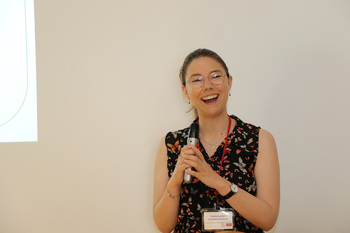ELSI Blog
152 Reflections on 2019 Japan SciCom Forum at ELSI
I recently had the opportunity to attend the Japan SciCom Forum (JSF) that was held on 16 and 17 of May. For the second consecutive time, JSF was hosted at the Earth-Life Science Institute (ELSI) in Tokyo. The two-day event brought together scientists, research administrators, PIOs and science communicators under one roof to talk all things science communication.
As someone early in their science communication career this was a great chance to meet and pick the brains of both junior and more experienced science communicators, and needless to say, I learned a lot during the event.
One important point to learn when starting to communicate about science is that there are good and bad points. We have a lot of responsibility placed on our shoulders. One of my favourite superheroes sums it up quite nicely: "With great power comes great responsibility". Kumi Kuroda (RIKEN Center for Brain Science) also made a great point in her keynote talk when she said, "Science communication needs to be good or it can even cause disaster". What do we do when bad communication means our organisation's reputation is in danger and we're on the front line? It's frightening but something we can't run away from. Pete Farley (University of California, San Francisco) helped prepare us for what to do when that disaster happens and gave me the tools to navigate those tricky situations.
I also participated in the workshops that were very interactive. I drew nosey monkeys when creating a graphical abstract, played in a Wikipedia sandbox, something I haven't been able to do since I was a child (granted it was a different kind of sandbox) and created a social media campaign led by what was on my team's randomly selected cards that went viral: #sexyleftovers.
Sometimes in science communication, you must be creative with your message, be it because of a narrow target audience or budgetary constrictions, so these workshops were a great way to have some fun and sharpen our skills. Drew Berry (The Walter and Eliza Hall Institute of Medical Research) also gave me serious creative envy when showing us his amazing, scientifically accurate animations. This opened my eyes to the beauty of the animation of molecular structures and was an inspirational example of science communication.
JSF 2019 also invited speakers from institutions around Japan to do a Flash Talk and I was one of those kindly invited to present our activities at Hiroshima University. I decided that I would speak about what I know: talking to international researchers. Hiroshima University has a mix of researchers from Japan and abroad. Of course, I ran over time, but I just really wanted to emphasise that we need to have good communication with researchers if we want to communicate properly to our audiences. I also wanted to show that being able to speak English is not enough to communicate well, using the example of myself and the slang I have to avoid when I speak (I may have spent a bit too long explaining what the word "craic " meant! - it means "fun" in Irish but is used as a greeting. "What's the craic?" is the equivalent to "What's up?"). I had a lot of fun during my session and the Flash talks sparked a lot of conversations with people later in the day.
Of course, it was not all work, the reception sponsored by EurekAlert! on the day 1 evening allowed us to mingle and chat over some great food and drink. I was personally delighted to see some vegetarian options, a surprisingly difficult thing to come by in Japan. We were also encouraged to explore the local area during lunch on the beautifully sunny second day. The environment at JSF was very friendly and relaxed, not too many people can say that they threw a (soft, padded) microphone at their colleagues' heads during a conference!
Overall, I thought it was a very successful event, providing a space to make connections and teaching all who were involved in something new. It is so important to have these spaces where we can talk frankly and openly with others who have the same experiences. Thanks again to the organisers who put in such hard work! I'll end this recap on an inspirational reminder by Brian Lin (EurekAlert!) that we must think outside the box when communicating science, or in his words, we should "be a unicorn"!
Author's bio:
Emma is the 4th Science Communication Fellow at Hiroshima University and has a bachelor's degree in biology and a Masters in Science Communication. Before Hiroshima University she worked in science communication in Ireland and France. Her interest is talking to scientists behind the research and she loves travelling and meeting new and interesting people! Follow Hiroshima University Research Updates on Twitter and Facebook.















